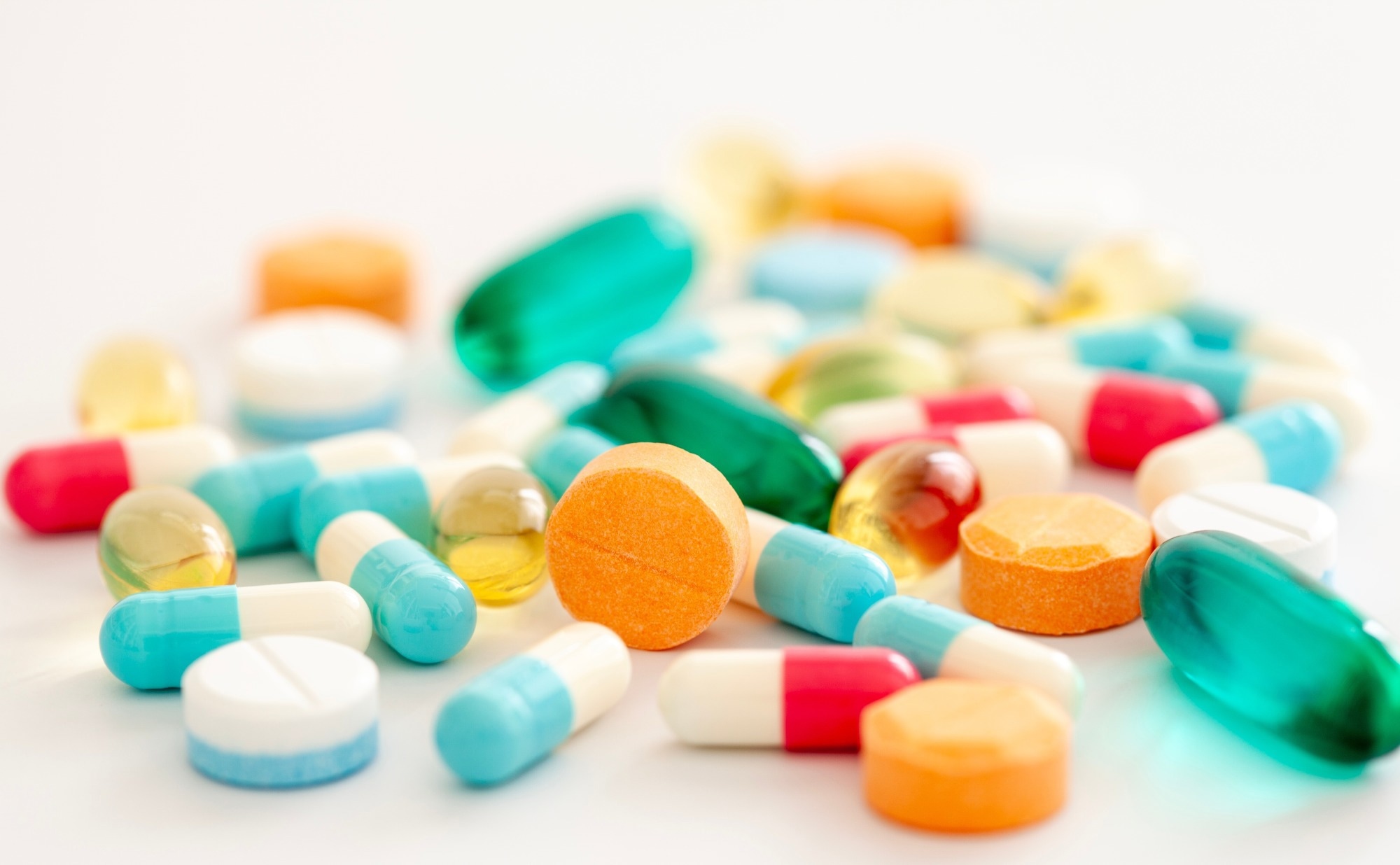Micro- and nano-plastic particles or MNPs are tiny plastic fragments that persist in the environment, enter the cells and organs of living organisms, and interact with various compounds, potentially altering their biological impact.
In a recent study published in Scientific Reports, a team of European researchers investigated how the antibiotic tetracycline adsorbs to four types of nano-plastic particles, namely, polystyrene, polyethylene, nylon 6,6, and polypropylene.
By combining computational and experimental approaches, they evaluated the impact of the tetracycline’s adsorption to nano-plastic particles on the stability, absorption, and activity of the drug.
 Study: The adsorption of drugs on nanoplastics has severe biological impact. Image Credit: BigKhem/Shutterstock.com
Study: The adsorption of drugs on nanoplastics has severe biological impact. Image Credit: BigKhem/Shutterstock.com
Background
Micro- and nano-plastics are small particulate pollutants that are widely found in natural ecosystems and originate from the degradation of plastic. These particles are small enough to enter biological systems and have raised significant health concerns.
Research has shown that MNPs can also adsorb various substances, including drugs and endocrine disruptors, and potentially transport them into the circulation and major organs of living organisms. Such interactions can disrupt hormonal functions and are suspected to contribute to various health issues, including cancer and infertility.
Antibiotic interactions with MNPs are especially concerning since the persistence of antibiotics in the environment already contributes to antibiotic resistance, and their association with MNPs may further aggravate this problem by elevating local antibiotic concentrations.
However, the specific dynamics of the interactions between antibiotics and MNPs, as well as their potential to influence drug bioavailability and resistance, remains largely unknown.
The Current Study
In the present study, the researchers examined the interactions between tetracycline and four types of nano-plastic particles — polystyrene, polyethylene, nylon 6,6, and polypropylene — using computational and experimental methods.
Understanding how antibiotics, especially widely used drugs such as tetracycline, interact with these environmentally prevalent nano-plastic particles is essential to mitigate potential health risks and formulate effective environmental policies.
The study modeled plastic-tetracycline interactions using simulated annealing — a method consisting of heating and gradual cooling to generate various stable configurations. They used two major strategies. One method was placing nano-plastic polymer chains around tetracycline and allowing the polymer chains to orient around the drug.
In contrast, the other method arranged tetracycline on the surface of pre-folded nano-plastic particles. The structures were then optimized for geometry to find the most energetically stable forms.
The researchers used molecular dynamics simulations to assess the stability of selected configurations while observing chain mobility and tetracycline positioning.
These simulations were conducted in water with temperature variations, which allowed the researchers to track the diffusion of tetracycline and monitor the stability of the interactions within the nano-plastic particles.
Simultaneously, the researchers also conducted quantum chemical calculations to obtain estimates of adsorption energies and gauge the affinity levels between each nano-plastic particle type and tetracycline.
Additionally, in vitro experiments were performed using cell lines to test the efficacy of tetracycline in the presence of polystyrene particles. Tetracycline-induced gene expression was measured in these cells to determine if adsorption to polystyrene reduced the biological activity of tetracycline.
Major Findings
The study found that interactions with nano-plastic particles strongly affected the stability of the antibiotic tetracycline, with each plastic type showing unique interaction profiles. Nylon 6,6 exhibited the highest binding affinity to tetracycline, followed by polystyrene, polyethylene, and polypropylene.
The researchers found that the amide groups in nylon 6,6 promoted stable hydrogen bonds with tetracycline, confining the drug within the crystal structure of the nylon 6,6 particles. In contrast, polyethylene and polypropylene showed weaker van der Waals-driven interactions, leading to a lower degree of tetracycline encapsulation.
Furthermore, the molecular dynamics simulations indicated that tetracycline often migrated within polyethylene and polypropylene particles due to the weaker van der Waals forces. In contrast, the stronger bonds within the polystyrene and nylon 6,6 structures kept the tetracycline molecule bound within the structures.
Additionally, the adsorption energies revealed that tetracycline adsorption generally increased with particle polarity. In polystyrene, the high affinity was linked to the non-covalent interaction between aromatic rings containing π bonds called π-π stacking, which occurred with the aromatic rings of tetracycline.
Furthermore, the adsorption energies also indicated that the adsorption was irreversible, and the antibiotic could potentially be transported to various locations along with the nano-plastic particles.
The in vitro testing conducted on the cell lines also demonstrated a decrease in tetracycline-induced gene expression when polystyrene particles were present, supporting the computational findings that polystyrene nano-plastic particles affected the drug’s biological activity.
Conclusions
In summary, the findings showed that tetracycline could strongly adsorb to MNPs such as nylon 6,6 and polystyrene, which altered its stability, bioavailability, and efficacy.
These interactions suggested that environmental exposure to MNPs could reduce the effectiveness of antibiotics and potentially promote antibiotic resistance in microbial populations.
Given their environmental and health implications, these findings also emphasized the need to understand plastic-drug interactions further, particularly in the context of antibiotic resistance.
Journal reference:
-
Dick, L., Batista, P. R., Zaby, P., Manhart, G., Kopatz, V., Kogler, L., Pichler, V., Grebien, F., Bakos, V., Plósz, Benedek G, Kolev, N. Z., Kenner, L., Kirchner, B., & Hollóczki, O. (2024). The adsorption of drugs on nanoplastics has severe biological impact. Scientific Reports, 14(1), 25853. doi:10.1038/s41598024757854. https://www.nature.com/articles/s41598-024-75785-4